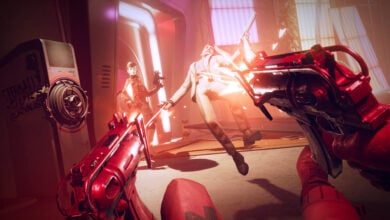Players have been noticing a lot of FPS drops, lag, and stuttering while playing Deathloop even on systems with decent specs. Here at eXputer, we have been testing the huge variety of graphics settings that Deathloop has to offer.
For our Best Deathloop Settings Guide, we compared all of the different optimized settings side by side to see which settings offer the highest FPS while maintaining the visual fidelity of the game.
I’ve benchmarked Deathloop on a PC with the following specs:
- CPU: AMD Ryzen 5 3600 6-Core Processor
- GPU: NVIDIA RTX 3070 8GB
- RAM: 16GB DDR4
- Storage: Samsung 1TB SSD Gen 4
You’ll at a minimum need an Intel i5-8400 or AMD Ryzen 5 1600 CPU, Nvidia GTX 1060 or AMD Radeon RX 580 GPU, and 12 GB RAM to run Deathloop on your PC.
The following settings are the most taxing on your system when it comes to performance:
- Shadow Details
- Water Details
- Sun Shadows
- Model Quality
Deathloop is slightly more demanding than Dishonored but runs decently on PC. The game’s optimization is good, but not the greatest out there as I did experience frequent FPS drops as well as crashes during my testing. With high-ultra settings, I was barely managing 60 FPS in the city area without RTX features. The PS5 port isn’t much optimized either as our reviewer Huzaifah Durrani also experienced freezes.
Best Settings Summarized
| Setting Name | What to Set it to |
|---|---|
| Texture Details | High |
| Model Details | Ultra |
| Shadow Details | Low or Medium |
| Water Details | Low or Medium |
| Terrain Details | Ultra |
| Decal Details | Ultra |
| Ambient Occlusion | Nvidia HBAO+ or FidelityFX CACAO |
| Sun Shadows | Simple |
| Post Process Anti-Aliasing | TAA or AA-High |
| Sharpness Post Process | FidelityFX CAS |
| TXAA Sharpness | 5-10% |
| Camera Motion Blur | Optional |
| Lens Flare | Optional |
| Light Shafts | Optional |
Best Deathloop PC Graphics Settings
The graphics and optimal Deathloop settings will all be examined in this area of our Deathloop Optimization Guide.
We will compare each setting to determine which one offers the highest FPS without compromising the game’s visual appeal. In order for you to understand how much a setting affects the performance of the FPS and the image quality, we will also provide comparison screenshots for each setting.

Texture Details – High
You can modify the sharpness and clarity of all the game’s textures using this parameter. The sharper the surfaces appear, the higher this setting. Higher settings have a significant negative impact on performance for graphics cards with less VRAM.
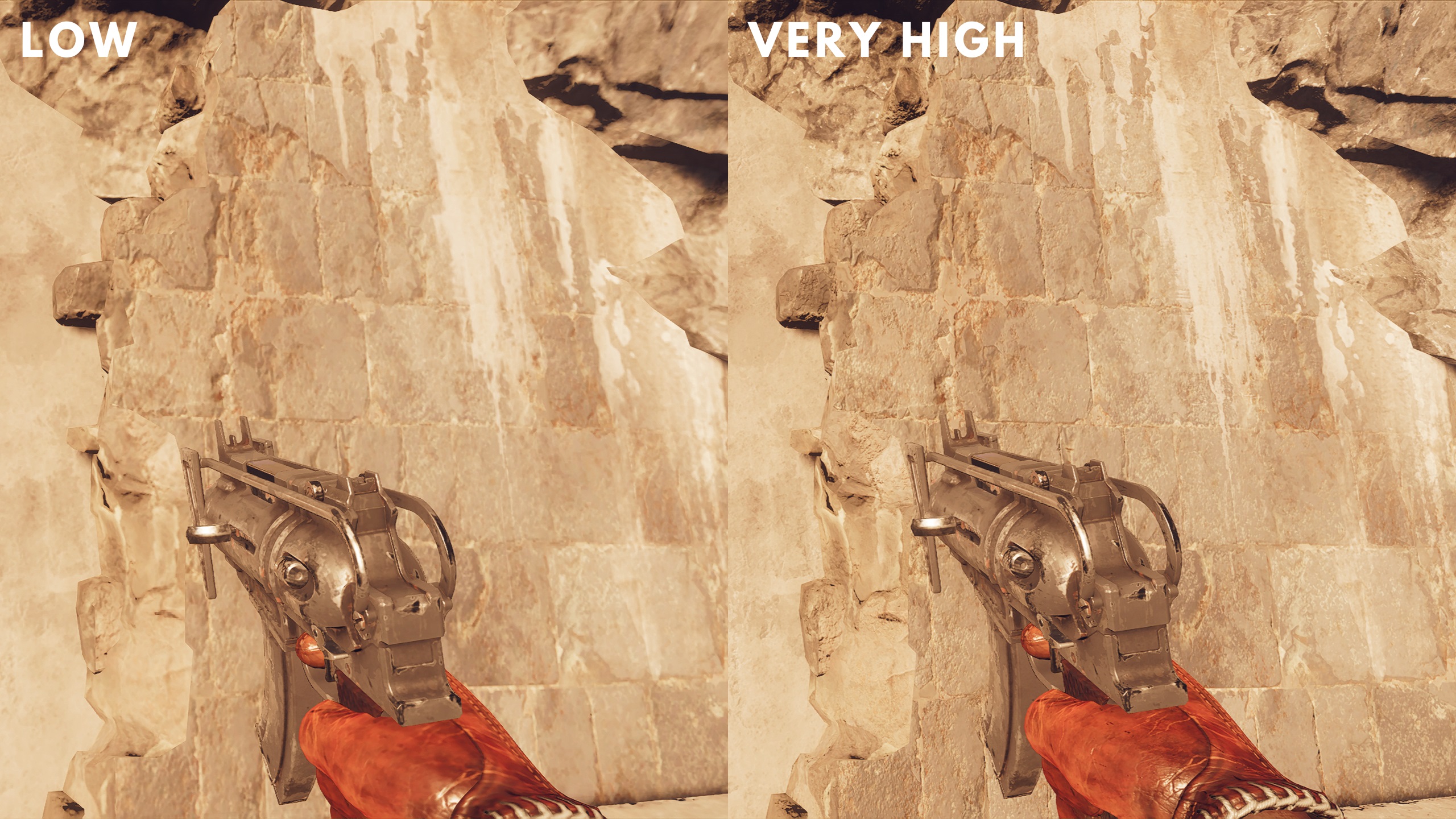
Deathloop has 3 different modes for the Texture Details setting(Low, High, and Very High). Low textures look noticeably more washed out than the High and Very High settings. There wasn’t a huge difference between High and Very High. High gave us a 4% performance boost and similar visuals as the Very High setting, so High setting is a nice balance for both performance and visual quality.
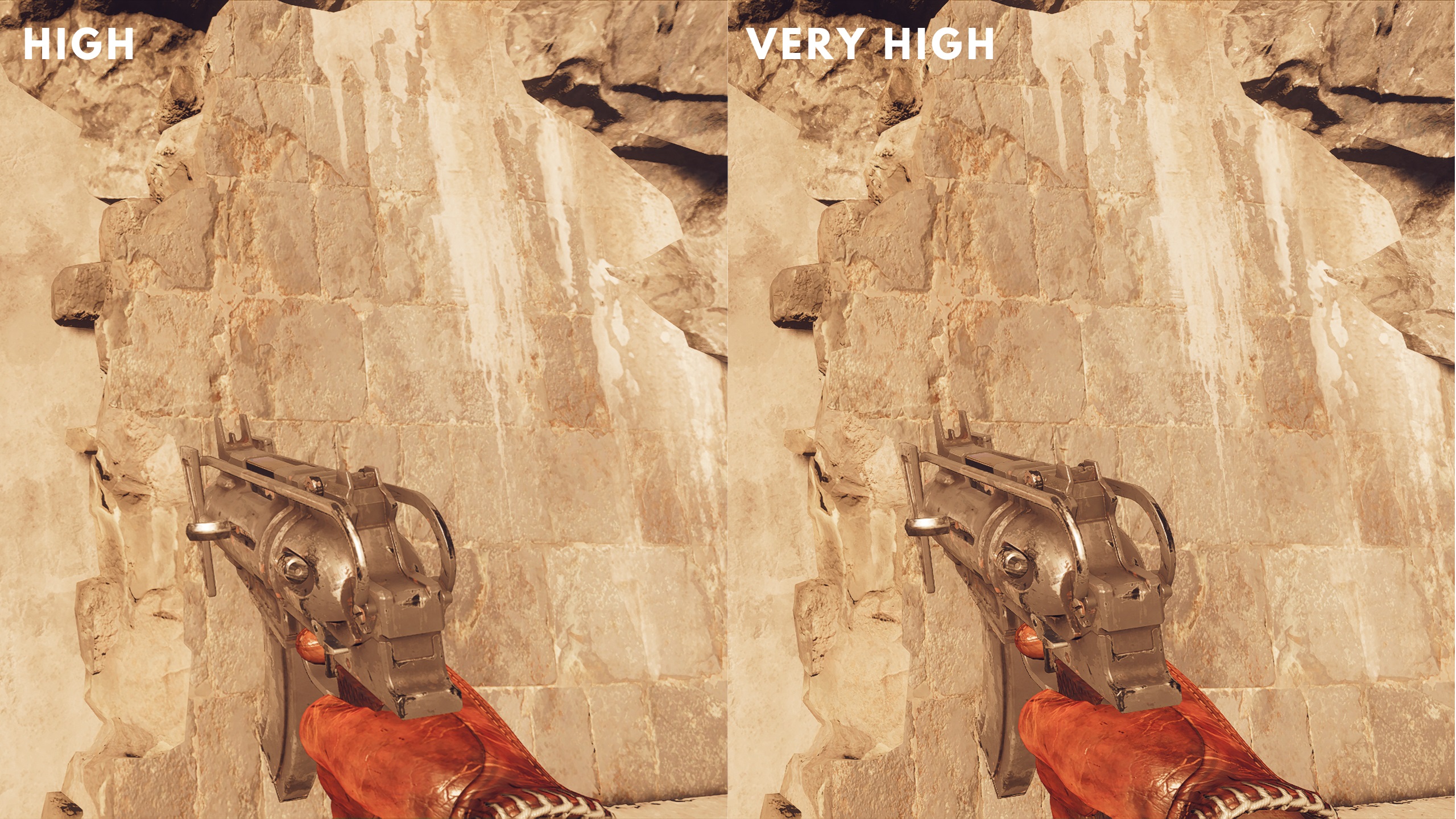
Model Details – Ultra
This setting adjusts the geometric detail of character and weapon models based on their distance from the player. The higher the Model Details setting, the farther away models must be before they are simplified. During our testing, we didn’t notice any noticeable difference between the Low and Ultra settings In Deathloop.
Don’t expect to get a lot of frames by turning the setting down. We recommend keeping this setting on Ultra because it doesn’t impact the performance or the visual quality of the game.
Shadow Details – Low or Medium
This setting adjusts the draw distance and shapes the accuracy of shadows. The higher the setting, the more accurate the shadows will look.
This setting has 6 different modes(Very Low, Low, Medium, High, Very High, Ultra). This setting has the biggest impact on performance in Deathloop. So changing this setting from Ultra to Low will give you a huge performance boost.

Shadows on lower settings appear to be more smooth and realistic compared to the sharp shadows on Ultra and High settings. Keeping this setting on Low gave us a 12% FPS boost while maintaining decent shadow quality. If you want shadows to be sharper then you can change this setting to Medium as it looks pretty similar to High and Ultra settings.

Water Details – Low or Medium
This setting adjusts the water shader settings In Deathloop. The higher this setting is, the more realistic the water will look. Changing this setting doesn’t impact the performance in most areas of the game. You will only notice the difference in FPS in areas where water is present.
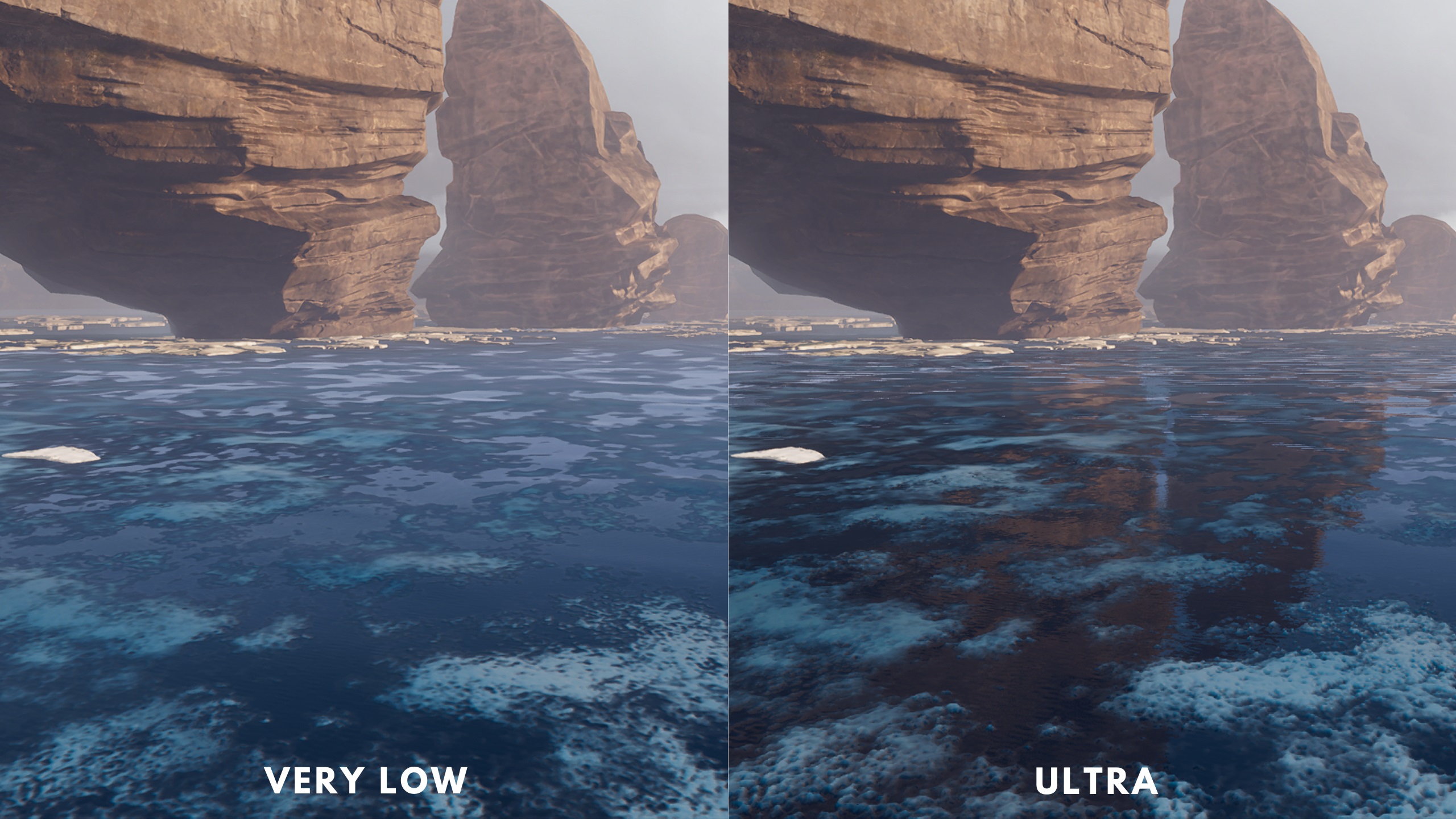
This setting also has 6 different modes to choose from. Changing the setting to Very Low will remove all reflections from the water, reduce the quality of the foam, and remove accurate specular highlights. Changing this setting to Low or Medium will give you a 6-11% performance boost in areas where a lot of water is present.
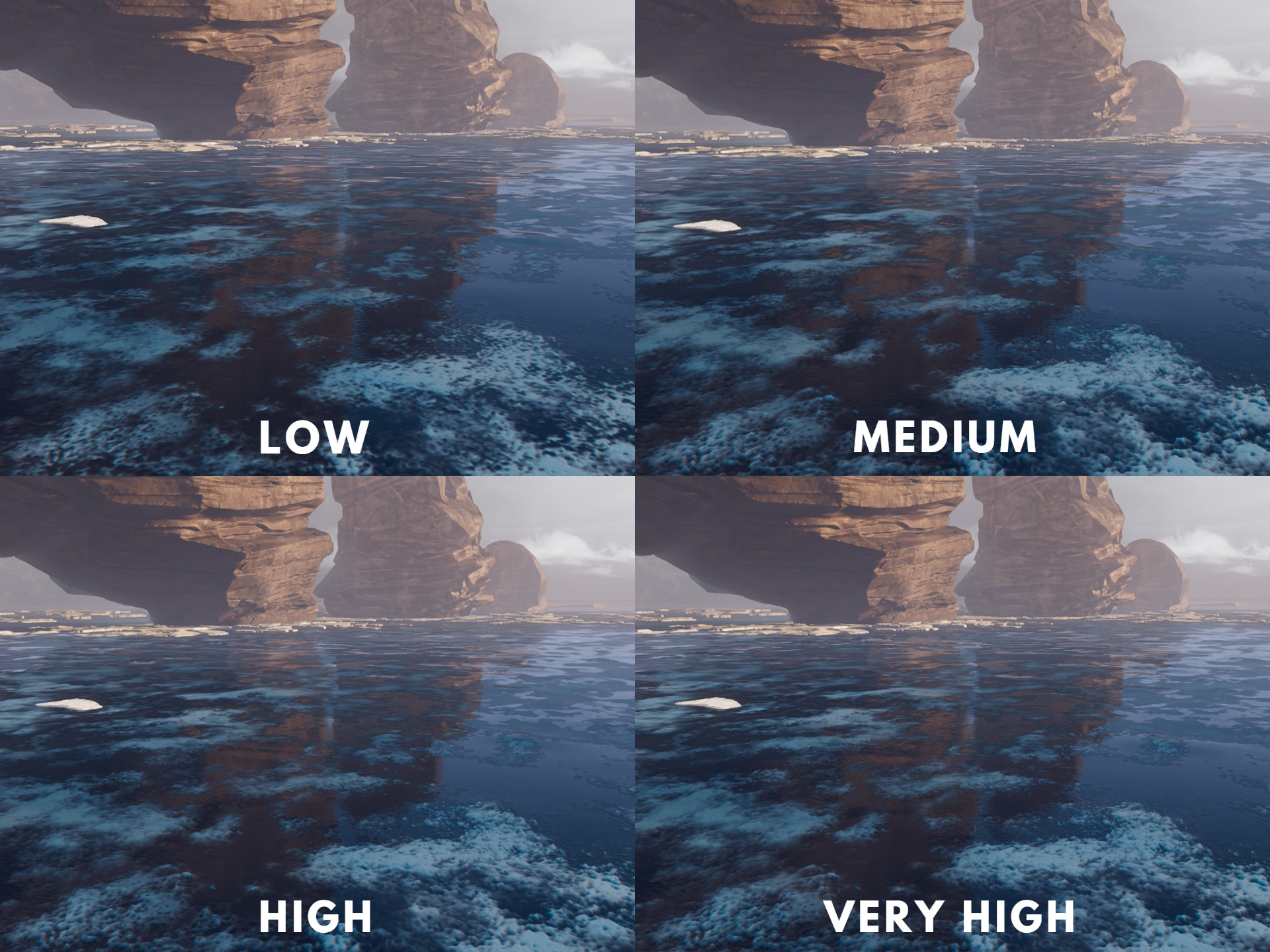
Terrain Details – Ultra
We tweaked this setting to see if it makes any difference in the performance or the details of the terrain textures. There was no noticeable difference in the terrain quality and the performance also remained the same. We recommend keeping this setting on Ultra as this setting has no impact on FPS and graphics quality. See the images below for a comparison between Low and Ultra Deathloop settings.


Decal Details – Ultra
Decals are formed when characters bleed and when bullets strike surfaces. The higher this setting is, the more decals can be rendered at the same time and they will stay for a longer duration before fading away. It’s almost impossible to test this setting in-game, we also didn’t notice a huge difference in the performance of the game by turning this setting to Ultra. We recommend leaving this setting on Ultra.
Ambient Occlusion – Nvidia HBAO+ or FidelityFX CACAO
Ambient Occlusion provides contact shadows when two surfaces or objects meet and where an object inhibits light from reaching another nearby game feature.
In terms of performance, RTAO had the most impact on performance giving us 30% less FPS than the other Ambient Occlusion modes. Both Nvidia HBAO+ and FidelityFX CAS gave us the same performance. The best option here is either the Nvidia HBAO+ or FidelityFX CACAO.
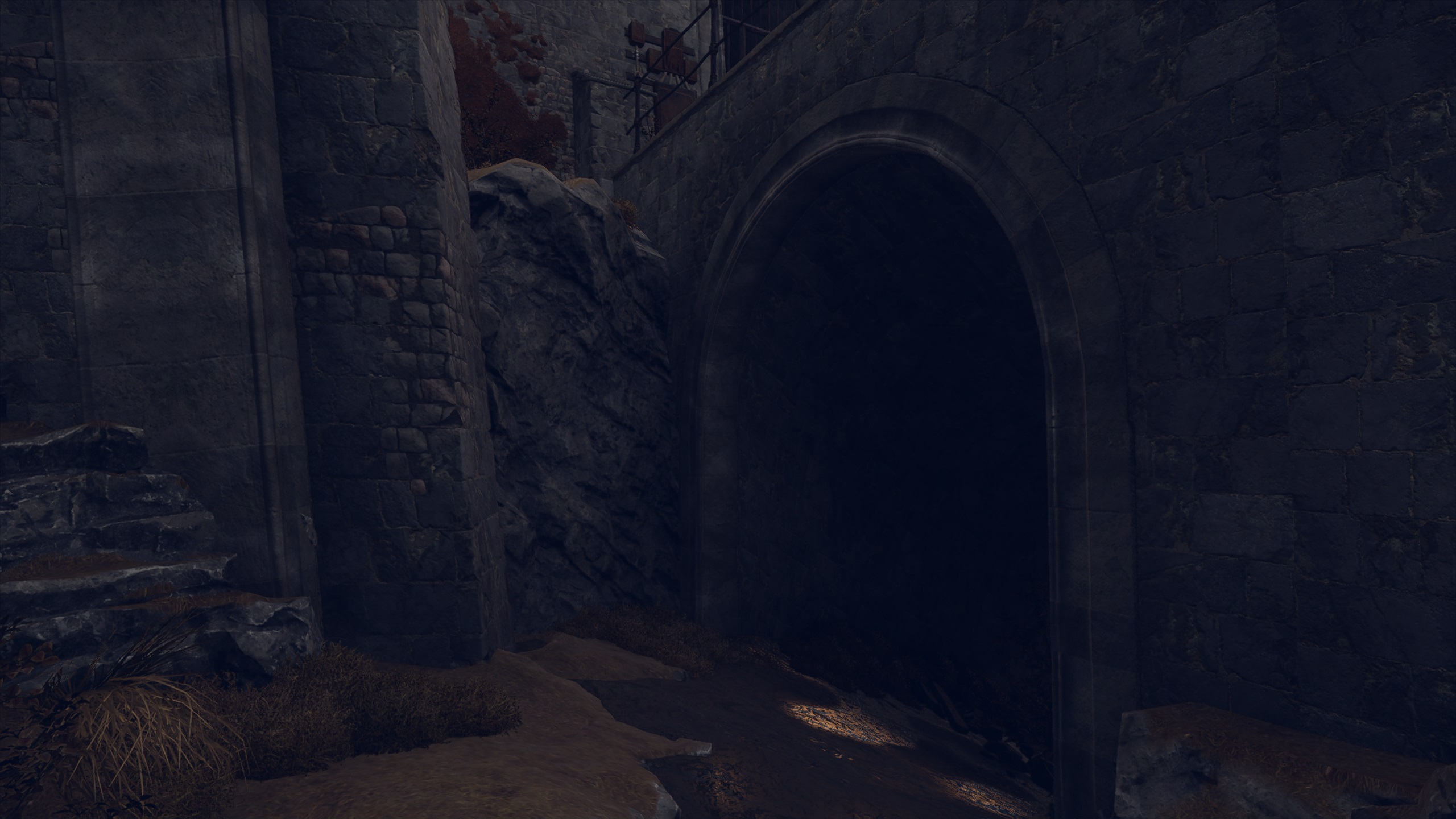
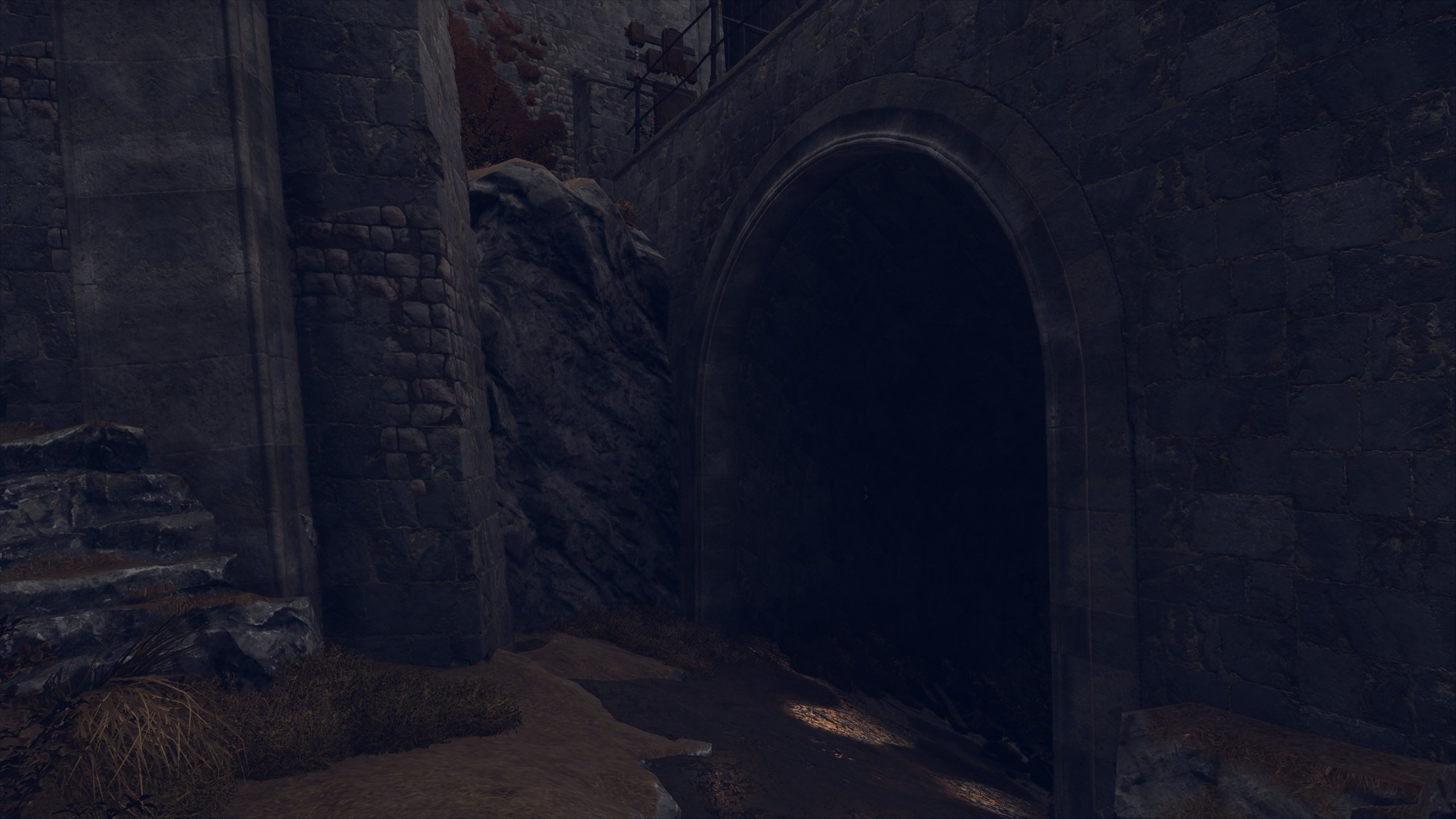
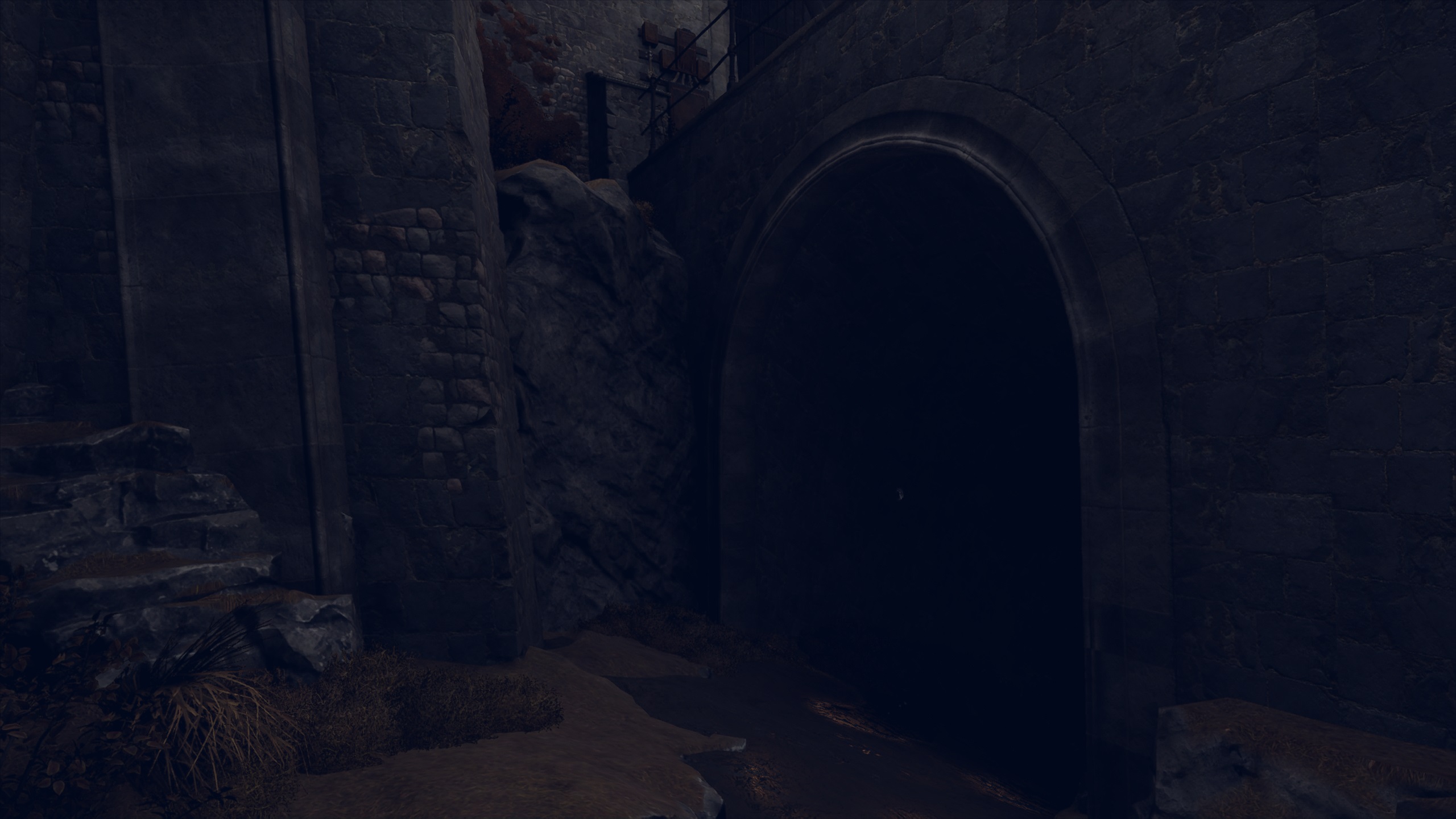
Sun Shadows – Simple
This setting adjusts the quality of shadows formed by sunlight, these shadows are different from the Shadow Details setting above.
This setting has 2 modes, Simple and Ray-Tracing. Sun Shadows on a Simple setting look fine. But if you have a high-end GPU you can turn on the Ray-Tracing option for a more realistic look. RT Sun Shadows will cost you a 12% performance drop. We recommend keeping this setting on Simple for a more optimized experience.

Post Process Anti-Aliasing – TAA or AA-High
Anti-aliasing is used to remove jagged edges from surfaces. This setting has 4 different modes in Deathloop. Anti-Aliasing can be turned off, or it can be changed to AA Low, High, or Temporal Anti-Aliasing(TAA). We recommend using the TAA setting as it does not impact the performance and it greatly improves the image quality. The comparison images for each of the three anti-aliasing options are shown below.
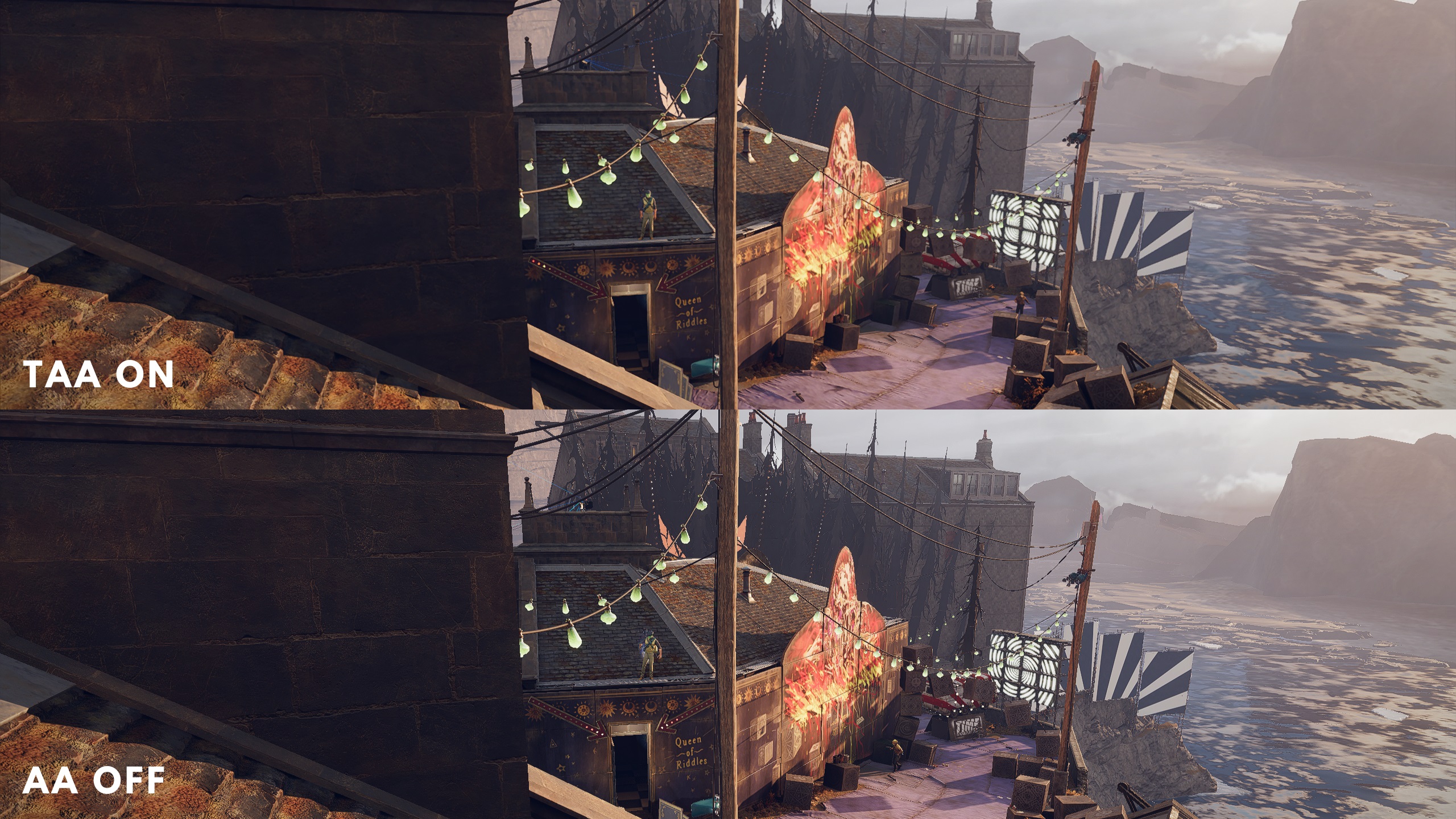
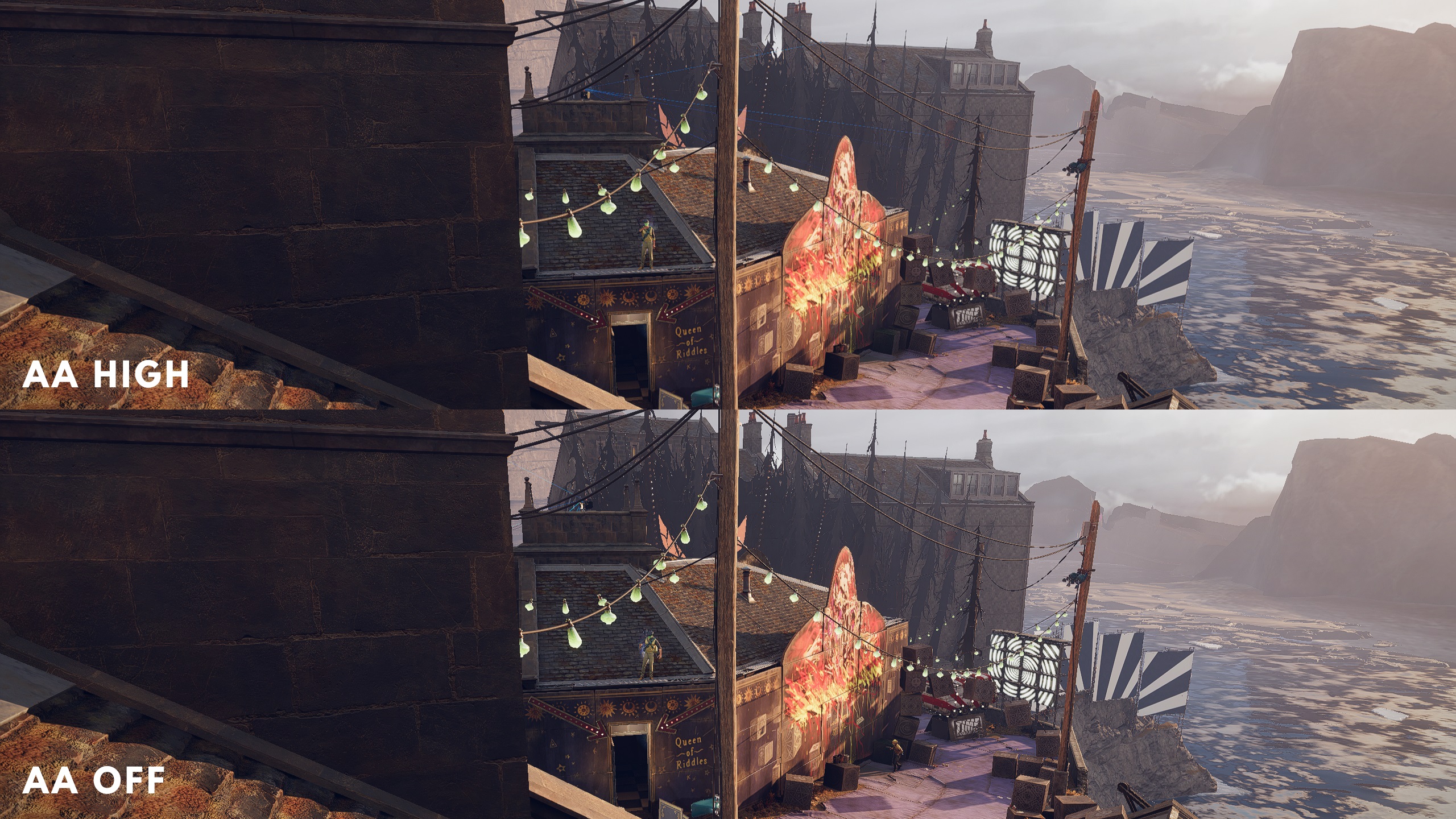
Sharpness Post Process – FidelityFX CAS
This setting applies a sharpening filter that reduces the blurriness that can be caused by Anti-Aliasing. Changing this setting to FidelityFX CAS will give you a small FPS boost while maintaining good visuals.
TXAA Sharpness – 5-10%
This setting is only enabled if you select Temporal Anti-Aliasing(TAA) in the Post-Process Anti-Aliasing Setting. You can change the intensity of the smoothing effect of TAA on a scale of 1-20. The higher the number you set, the more it will impact the performance.
Camera Motion Blur – Optional
Depending on your preferences, the motion blur setting can be changed. Because it produces clearer visual quality and marginally improves FPS performance, we advise turning this setting OFF.
Lens Flare – Optional
This setting lets you disable or enable the lens flare effect on the camera in-game. Turning this setting off will only slightly increase the FPS.
Light Shafts – Optional
This setting lets you enable or disable rays of light falling from the sky when your view of the moon or sun is partially obscured, it has a very small impact on performance.
Windows 10 Optimizations For Deathloop
Your FPS should have already been significantly boosted by the time we finished configuring the most crucial Deathloop settings. Here are some Windows 10 optimizations that will ensure that your system is performing at its very best in Deathloop.
- Activate Ultimate Performance Power Plan
- Force Use Dedicated GPU For Deathloop
- Disable Hardware Acceleration
- Disable All Unnecessary Applications Running In The Background
- Clear System Cache
Deathloop Benchmarks On Optimized Settings
After applying all of the best Deathloop graphics settings and other optimizations in the Article above, We ran a final benchmark (Video Attached Below) to see how much of a performance and FPS boost we gained and compared the visual quality of the game’s Ultra setting and our optimized settings. We noticed a 15-20% FPS boost without sacrificing any visual quality of the game.
Here is a 2-minute benchmark video that shows the difference between our Deathloop optimized settings and the game’s Ultra Settings.

I would also recommend tuning your GPU settings with the following guides:
Similar settings guides:
Thanks! Do share your feedback with us. ⚡
How can we make this post better? Your help would be appreciated. ✍



